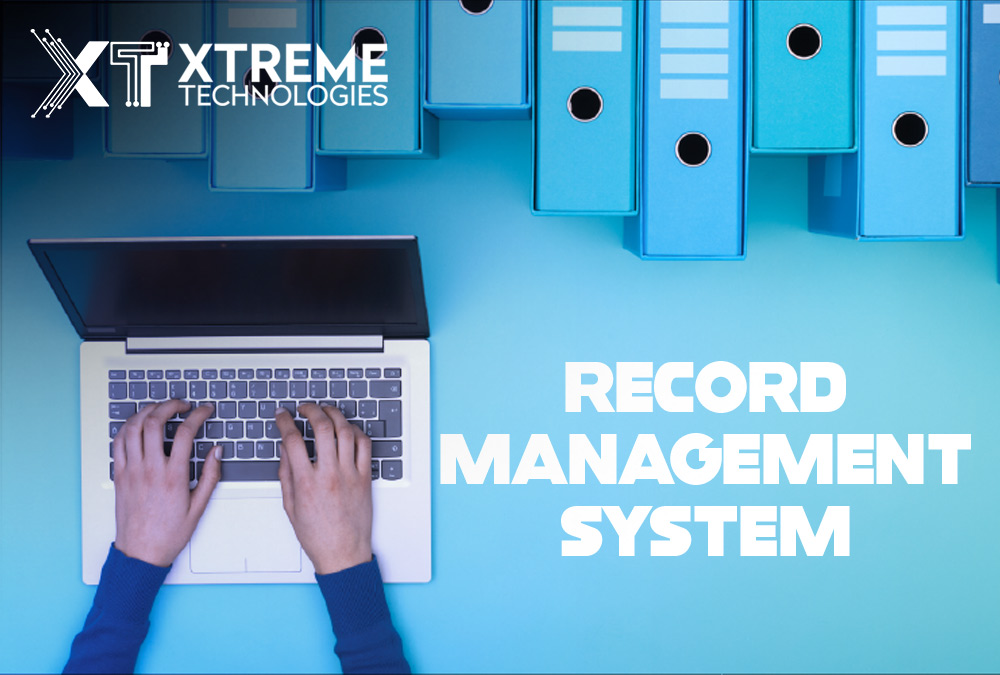
Advantages of Integrated Records Management Solutions in 2022
All, BPO,
Published on: July 05, 2022
Any business's paperwork is essential and can get lost if it is not maintained. According to a survey, about 75% of papers are lost or misplaced. The primary purpose of a record management system is to store business content over a long period. But it is not enough to do this because it is responsible for making it accessible at all times. Challenges in retrieving records result in a 21.3% productivity loss for companies.
A proper record management system can effectively manage records by eliminating the risk of loss. It keeps track of all your business records and helps you keep track of them. What can avoid the need to crush offices with outdated records with the periodic appraisal of documents? Follow this guide to understand how to build an integrated record management system and its benefits.
What is a Record Management System?
A record management system is software that manages records efficiently and innovatively throughout its life cycle, from creation to distribution and disposal. It is also known as electronic records management. Organizations are equipped with information from various sources and in multiple formats such as paper files, emails, digital documents, photos, audio recordings, and videos. Records Management Team. It is responsible for identifying information maintained as a record, which can become increasingly heavy in the absence of a record management system to manage the growing volume of documents.
3 Steps to Creating Integrated Record Management Solutions
Every organization is trying to set up a record management solution within itself. The detailed error of the steps is as follows:
· Analysis
First, you want to know where the content is applied to the RM framework. Then, at this point, what should investigate an itemized material to identify its quality. For example, research will help you understand the nature of metadata and record types.
Developing strong management is key to building an integrated framework. The analysis will help you briefly examine realistic lead times and important contacts.
You will now begin to understand which metadata needs to be corrected. The analytical process also provides some insight into how the integration will work.
· Integration
The next step is to have all the content available for the RM system. Therefore, you need to connect to the RM target system from different sources. Then again, a content service bus is ready to help you in this process.
Content management is based on a brought-together model of transportation information. It provides a standard connector to each popular content source. In addition, you will track a design that can be interface with the helper. New sources, The combination with the RM application does not need to be changed to fit the new source. This process can make the archive a piece of the source application. Although it has gone through the design of content management transportation, it could very well be a valuable extension to the included RM framework.
· Normalization
Furthermore, content can be normalized at multiple levels using the content service bus. It identifies duplicates before they are stored on the RM system. Copies are usually held in the RM system once, depending on the business rules. Occasionally, reports are sent to archive administrators or enterprise content managers, so they know what to do with them.
Normalization is also based on a unified content model. All sources are connected through a one-time transformation. As a result, the latest repositories can be related more easily. Furthermore, it can ensure that the convertible business regulations and enrichment work harmoniously.
Read Also: 6 Easiest Ways to Improve Your Back Office Efficiency
Benefits of an Integrated Records Management System
1. Manage the Development and Growth of Records
Electronic files are becoming increasingly important to organizations. However, it hasn't drastically reduced the amount of paper used in offices. If we talk about an integrated records management system can manage the generation of records. Records will only be retained if they are required and active. It prevents the unprecedented growth of forms in the office environment. In addition, it will reduce the need for extra storage space to keep files that are not needed.
2. Regulatory Compliance
Over the years, compliance issues have only become more stringent. Companies should adopt an integrated records management system to comply with rules and regulations. A failure to provide vital records during a regulatory check can result in severe penalties. There may also be legal consequences for your company as a result. The use of advanced record management technology can ensure regulatory compliance. You should also start developing a robust policy for managing and retaining records within the organization.
3. Protect Important Information
Any public or private company needs a systematic way to protect its data. Another major cause of loss is the theft or loss of records and information. An integrated record management system helps protect the critical information of your companies.
Company files are valuable things that can be takings into account in future planning. The records cover all of the company's past activities. Any time managers may need to research how the company has performed over the years.
In addition, some data can be confidential in the business ecosystem. An integrated record management system will protect your information from unauthorized resources. And no one will be able to tamper with the company's sensitive information.
4. Effective Retrieval and Disposal of Records
There can be severe consequences when you need a record urgently and can't locate it in time. You will first lose a great deal of billable time. You will also lose customers who can add value to your business. A sound filing system will make it easier to retrieve records. Using this service, you can also dispose of documents that have passed their end-of-life date.
Today, an outsourced accounting service provides owners of accounting and bookkeeping firms with an offshore extension of their team. The service provides those owners with accounting professionals (located in another country), who can complete work that involves payroll, accounts payable, accounts receivable, financial reporting, and much more.
5. Assimilate the Latest Technologies for Records Management
It is always prudent to invest in an integrated record management system. Having a physical records management system in place is even better. You will be able to integrate the new record management technology into your current system. As a result, the existing system will become more robust. Today, outsourced accounting services provide accounting support to small and medium-sized businesses that may never have an in-house accounting department. In addition, what can use these services complement an existing accounting department?
6. Get Rid of Litigation Risks
It is possible to minimize the risk of litigation and penalties by implementing an integrated record management system. Furthermore, it will help you avoid any liability associated with disposing of documents.
7. Motivate Employees
A clumsy filing system leads to frequent data loss due to mismanagement of records. As a result, a poor work environment develops. Hostile work environments reduce employee motivation. Implementing an integrated records management system ensures that your employees know how serious you are about keeping records. As a result, they become more aware of the value of data and more cautious.
8. Improved Decision-Making Process
As relevant data becomes easier to access, organizations can make faster decisions. In addition, companies can keep up with the competition by making informed decisions. Data management will bring valuable information in front of you and eliminate unnecessary details. In addition, authorized managers and executives can search and locate files faster due to the indexing and retrieval features.
Final Thoughts
Everyone has adopted digital technologies, making every organization necessary to establish integrated record management. It maintains the required records and helps save storage by removing unwanted data.






Recent Comments